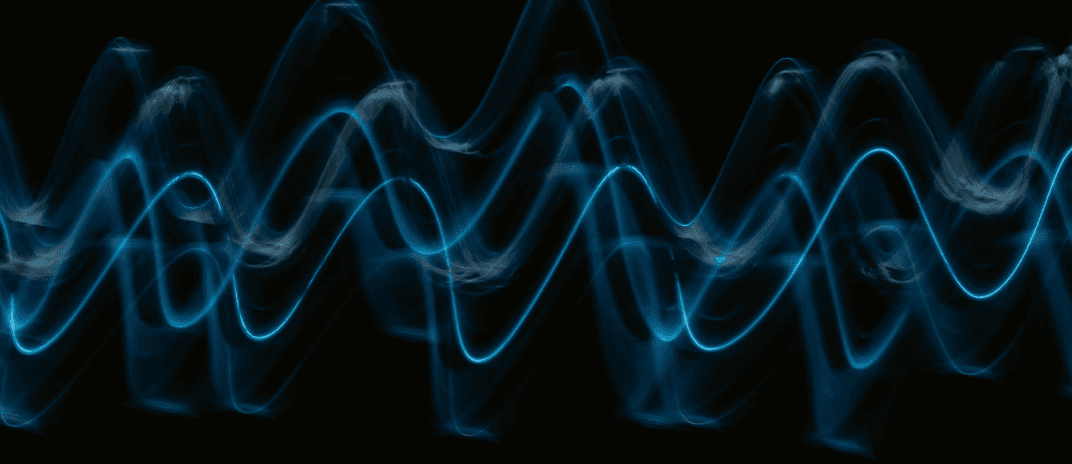


Our sleep can be easily disturbed by various sounds. From the buzzing noise coming from the streets outside to the creaking of a door. It’s no wonder why some of us may opt for sleep sounds like brown or white noise for sleep. But between brown noise vs white noise, which is better?
In this article, we’ll explore the differences between the two and determine which one is more effective for promoting restful sleep. By the end, you’ll have a clear understanding of the benefits and be able to decide which noise color is best for your needs.
Brown noise, also called red noise, is a low-frequency sound that is similar to white noise. The difference is that it produces a rumbling sound, which is deeper and more natural sounding.
It can mask background noises and help people, especially babies, fall asleep more easily and deeply.
It can sound ‘rough’ compared to pink noise and may resemble the sounds of a river current or a strong wind. Below is an audio clip example of what brown noise sounds like.
White noise is a combination of all the frequencies that a human ear could pick up on. So fan sounds, radio or television static are all examples of white noises. It is typically described as a hissing sound.
Like brown noise, it can help to drown out distracting background noises so that you may fall into a deeper sleep.
Below is an audio clip example of what white noise sounds like.
Both white and brown noise can help mask disruptive sounds, allowing you to fall asleep faster and stay asleep longer.
White noise, with its equal intensity across all frequencies, can create a soothing background sound that blocks out external stimuli and promotes relaxation.
Brown noise, on the other hand, has a deeper intensity and can provide a more calming and immersive experience, similar to the sound of rushing waterfalls or distant thunder.
While there is limited research on brown noise compared to white noise, many individuals find it more pleasant and conducive to restorative sleep. Ultimately, the preference between white or brown noise depends on personal preference and what helps you sleep better.
| Benefits of White Noise for Sleep | Benefits of Brown Noise for Sleep |
|---|---|
| Masks disruptive sounds | Masks disruptive sounds |
| Promotes relaxation | Provides a calming experience |
| Helps you fall asleep faster | Enhances restorative sleep |
| Improves sleep quality |
Note: The table above highlights the benefits of both white noise and brown noise for sleep.
Whether it is to improve sleep, concentration, or relaxation, both brown noise and white noise have their benefits. Here is a table of comparison to help you determine which is better:
| Brown Noise | White Noise |
| More energy at lower frequencies | Contains all frequencies at equal intensity |
| Sounds similar to a waterfall or a distant thunder | Sounds like radio or tv static |
| Sounds similar to a waterfall or a distant thunder | Higher-pitched in sound which may be harsh or irritating |
Both white noise and brown noise can be effective in calming and settling the mind, allowing for a deeper and more restful sleep. Ultimately, the preference for white noise or brown noise depends on individual preference.
When choosing the right noise color for sleep, consider your individual preferences and hearing abilities. Here are three factors to keep in mind:
1. Personal Preference: Some people find white noise soothing, while others prefer the deeper sound of brown noise. It’s important to choose a noise color that you find pleasant and relaxing. Experiment with different options to see what works best for you.
2. Sleep Context: Consider the specific sleep context in which you’ll be using the noise color. For example, if you live in a noisy environment or have trouble falling asleep, white noise might be more effective at masking background noises. On the other hand, if you’re looking for a calming and settling effect, brown noise could be a better choice.
3. Hearing Abilities: Your hearing abilities can also influence your choice of noise color. If you have certain hearing impairments or sensitivities, it’s important to choose a noise color that’s comfortable for you to listen to throughout the night.
Here are some tips to try to get the most out of using sounds for sleep.
You may consider investing in a sound machine or a noise generator that produces a consistent sound. This helps to mask out background noise and reate a calm and soothing environment. A white sound machine for example, can drown out disruptive sounds and promote relaxation.
If you are looking for a specific type of noise, you can consider using a noise generator that allows you to choose between various noises such as brown noise, pink noise and even white noise.
Alternatively, you may also try using sleep sound apps such as ShutEye®. Shuteye is a patented sleep-tracking app that comes with a sleep sounds feature. There you will be able to find a variety of sleep sounds ranging from premixed audio, and color noises to custom mixes.
Additionally, these apps are also lower in cost as it is on a monthly subscription basis. If you don’t like it, you may always opt for a shorter subscription.
When you are using a sleep sound to help you fall asleep, ensure that the volume is set at a comfortable level. It should be loud enough that it drowns out any disruptive noises.
To really maximize the experience of using sleep sounds, you should complement it with good sleep hygiene. It is best for you to follow a consistent sleep schedule, create a sleep routine and ensure that you have a comfortable sleep environment.
You also want to limit caffeine intake, limit screen time and to engage in more physical activities during the day. Doing all of these together plus using sleep aids will help to make it easier for you to drift off to sleep.
In conclusion, both brown noise and white noise have their benefits for promoting better night’s sleep. Brown noise, with its deeper and more soothing sound, can be particularly effective for relaxation and masking background noises.
On the other hand, white noise, with its consistent and steady sound, can help block out external distractions.
Ultimately, the choice between brown noise and white noise comes down to personal preference and what works best for individual sleep needs.